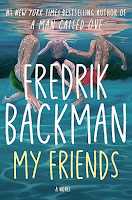Abundance by Ezra Klein and Derek Thompson is a solid work of nonfiction, with abundance defined as us having enough of what we need to create lives better than what we had. The book notes transportation, health, housing, and energy as building blocks of the future, and that we must build and invent more of what we need.
The unaffordability and shortage of housing in America is described as perpetuated by a Not in My Backyard approach from people who already own homes, making it difficult to build affordable new housing. Particularly in California, projects are difficult to complete, as they're often hobbled by special interest groups. Rules and regulations, many of them environmental, from the 1970s have prevented urban-density and green-energy projects that would help alleviate problems today.Conservatives don't recognize when government is needed, as government must fund risky technologies whose payoff is social rather than purely economic, and liberals focus too much on protecting and preserving rather than building.
Chapters from the book include:
Chapter one: Grow - Homelessness is a housing problem, and Lawn-Sign Liberalism is characterized by believing that all lives matter, but not wanting affordable housing around you.
Chapter two: Build - Lawsuits are an overused took that prevents growth, and what starts as well-intentioned can become a roadblock to good.
Chapter three: Govern - Rules and regulations, even when created for good reasons, make things difficult.
Chapter four: Invent - We need government to fund invention, with the COVID vaccine a perfect example.
Chapter five: Deploy - It's the delivery mechanisms that matter.
Conclusion - Abundance is liberalism, but it's a liberalism that builds.













